PO Box 95
Lyttelton 8841
Te Ūaka recognises Te Hapū o Ngāti Wheke as Mana Whenua and Mana Moana for Te Whakaraupō / Lyttelton Harbour.
LocalEyes: Winsome Dormer

We invite you to review our second guest curator, Winsome Dormer’s selections from our collection.
“I’ve chosen horses as my theme, and the various roles they played in life in Lyttelton. As an additional theme, a few slides at the end relating to my family and logistics.”
A former speech therapist, Winsome Dormer accepted an opportunity to start up a ship supply business, Independent Provedoring Co Ltd in Lyttelton in 1989.
31 years later Winsome reflects on the personal and business journey that opportunity presented: Customer service is the number one driving force behind this now NZ-wide business. Whilst specializing particularly in the NZ fishing fleet, the services of Independent Provedoring Co Ltd also extend to cruise ships; bulk carriers; car carriers; scientific research vessels and tankers and we are very proud to have provisioned the Italian Expedition to Terranova Bay in Antarctica for the past 31 years. The company not only supplies all food items but the full range of deck, engine, safety, hardware, pantry - in other words anything a vessel requires!
As well as her daily view of Lyttelton from her office window, Winsome shares with us another personal connection to Lyttelton’s history – see the last slide in the show for a special building with an old Lyttelton connection.
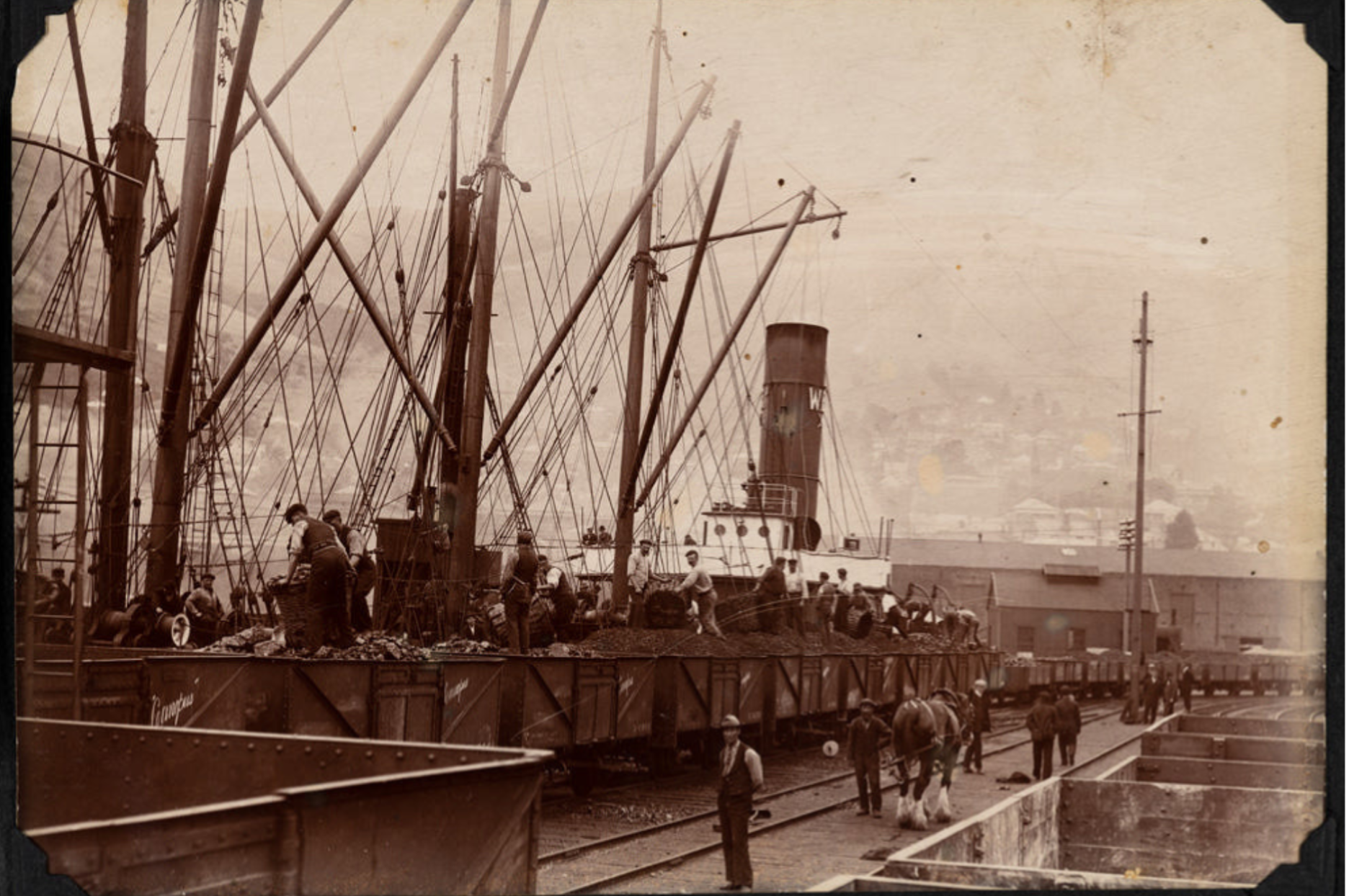
Early 1900s - Collier "Canopus" discharging / coal at Lyttelton. (Horses used for / hauling trucks on wharf, were / replaced by Electric Capstans in / 1922). Date: 1900-1950. Photographer unknown. Te Ūaka The Lyttelton Museum ref. 14985.98 Album 2 / Fletcher Series.
“Being a ship supplier, my daily focus is on logistics and efficiency and I’m fascinated by how horses played a major role in transportation in those early days. These images and their captions raised more questions than answers for me – don’t forget you can leave comments on the catalogue at https://ehive.com/collections/... if you know any of the answers. In the image above, sometime before 1922, we see horses being used to haul the coal trucks to the wharf for the coal to be unloaded.”
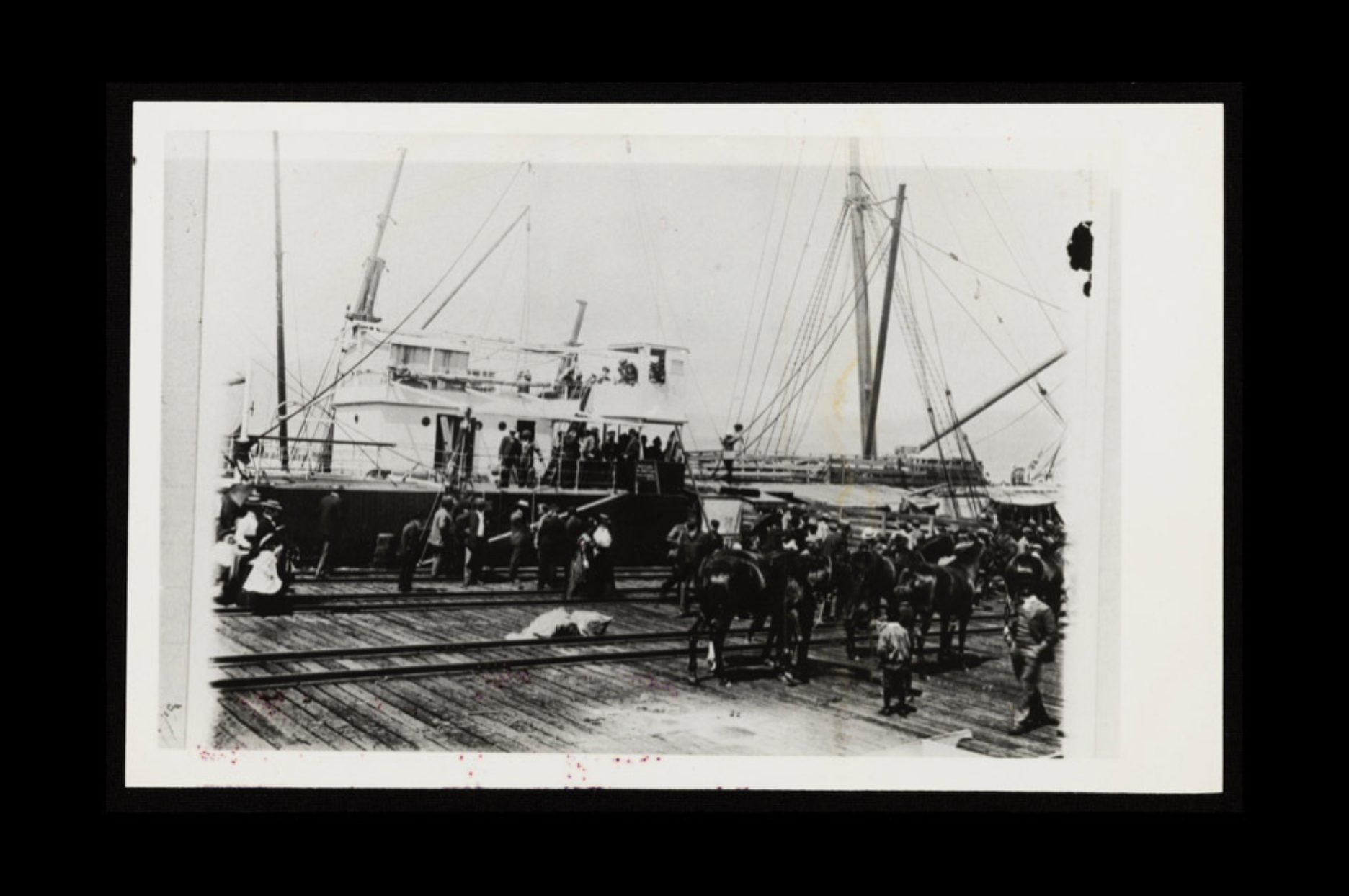
Reproduction of an older photo. Horses on wharf being loaded onto unidentified ship headed to the South African War, Lyttelton February 1900. Photographer unknown. Te Ūaka The Lyttelton Museum ref. 14751.1. Frazer Collection 5591.
One wonders how a scheme like this was initiated? In sending horses to take part in the war in South Africa-I can’t help but wonder what the conditions would have been like on board? How many of these horses survived; what were they fed…. did they ever return to NZ; had they been purchased or requisitioned, and the list of questions goes on….
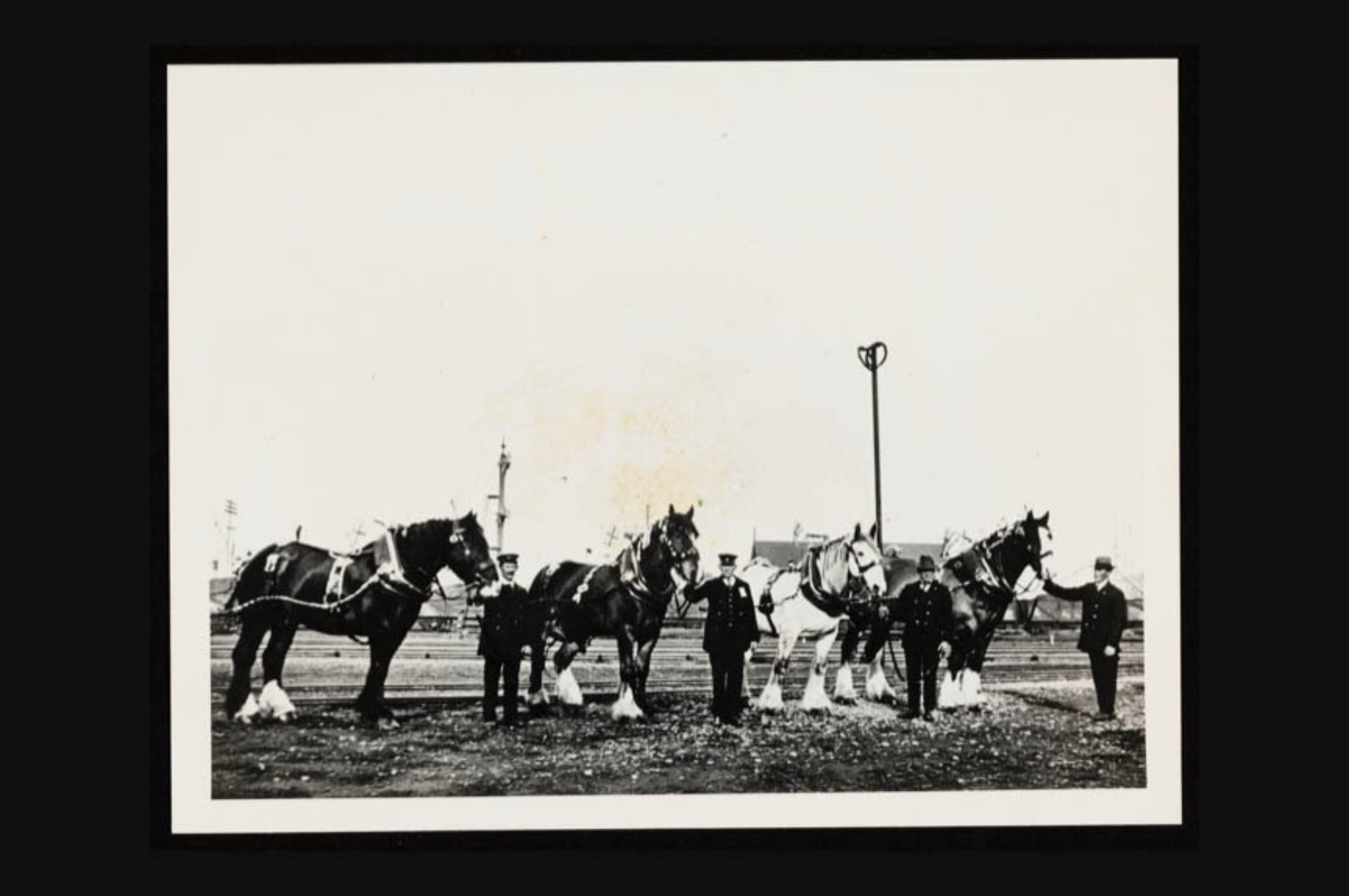
Railway Horses and their handlers on the Lyttelton Waterfront, 1910. Photographer unknown. Te Ūaka The Lyttelton Museum ref. 14875.1
Here we see Clydesdale horses being used in logistics on the wharf; where were they bred, and housed? Clearly they provided work for many in Lyttelton: -handlers; farriers; feed merchants; saddleries.
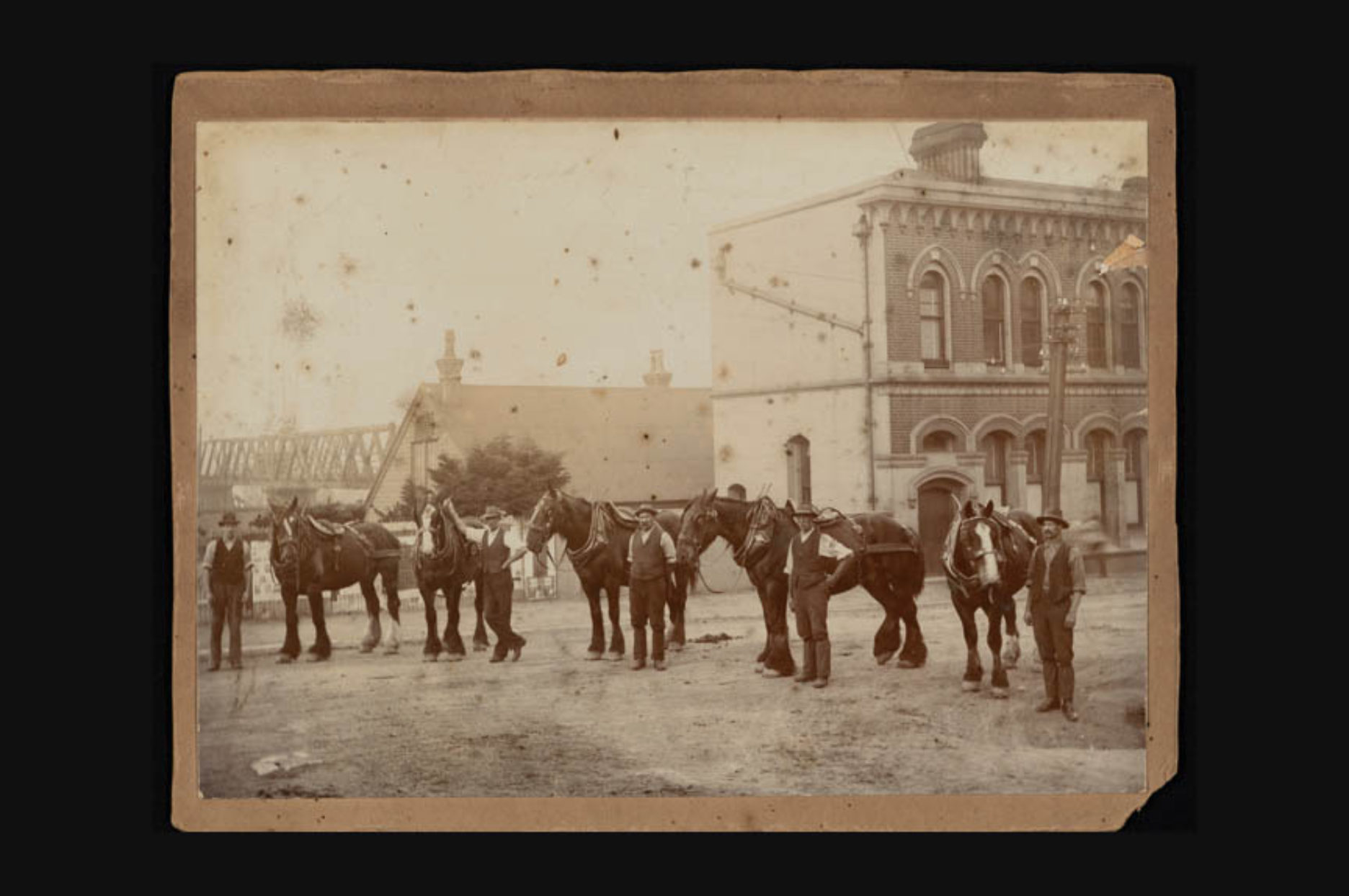
The Lyttelton Borough Council Horses with their handlers. Date: 1900-1950. Photographer unknown. Te Ūaka The Lyttelton Museum ref. 9834.1
More beautiful Clydesdales, this time the property of the Lyttelton Borough Council. Possibly they assisted with the night cart collection and rubbish removal for rate payers. Possibly these were housed in the old stable area on Donald Street, Lyttelton near the previous Lyttelton Museum location.
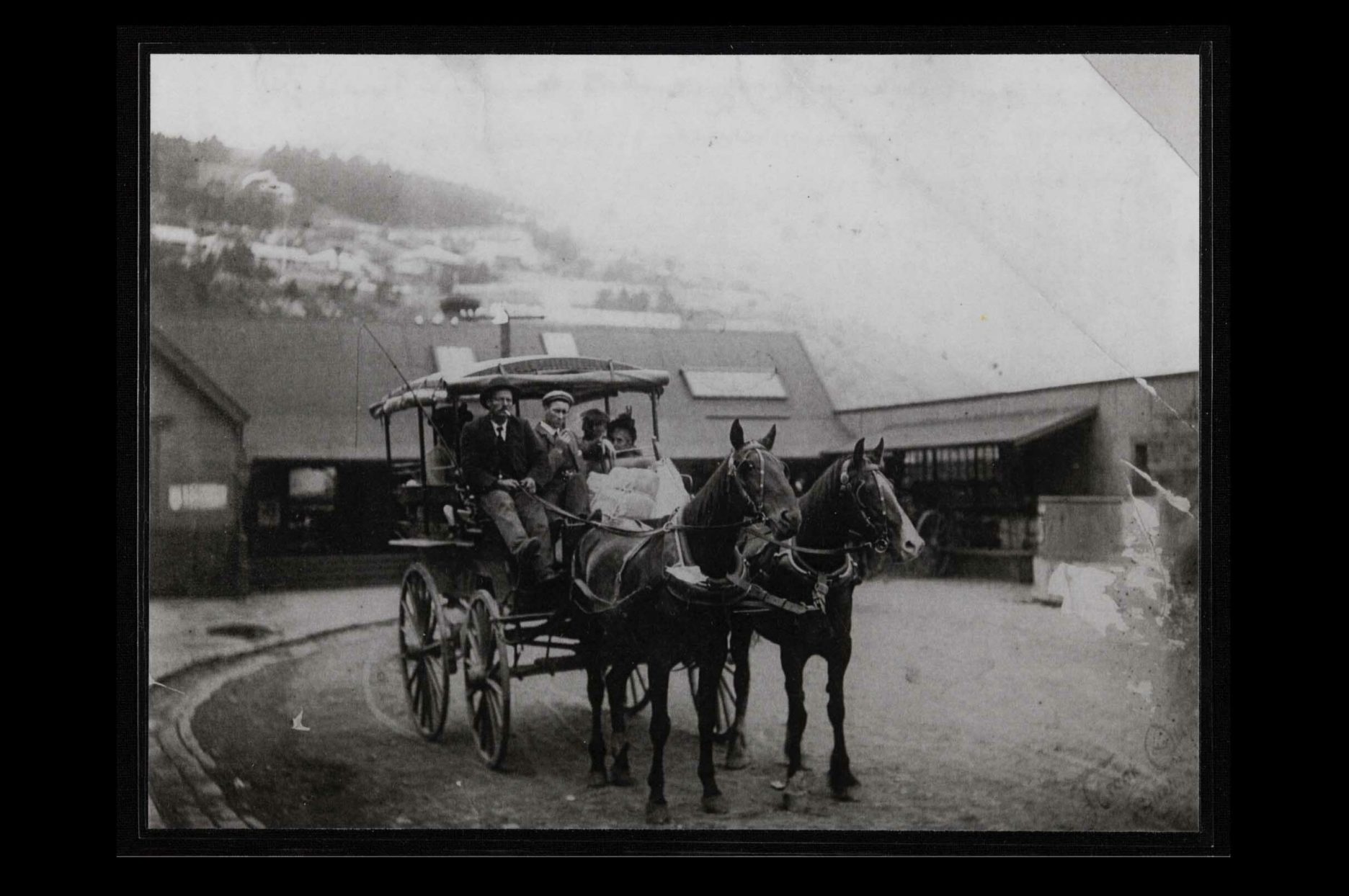
The horses Glen and Mona pulling the mail and passenger coach from Lyttelton to Allandale driven by Robert Harris, front seat passenger is John Radcliffe. Taken at Lyttelton Railway station. Date: 1900-1950. Photographer unknown. Te Ūaka The Lyttelton Museum ref. 12184.1
Love this picture of the old railway station and the more thoroughbred style of horse being used rather than the Clydesdales in the previous images. A long ride home from the city – train through the tunnel to Lyttelton, and then horse and coach round the harbour.
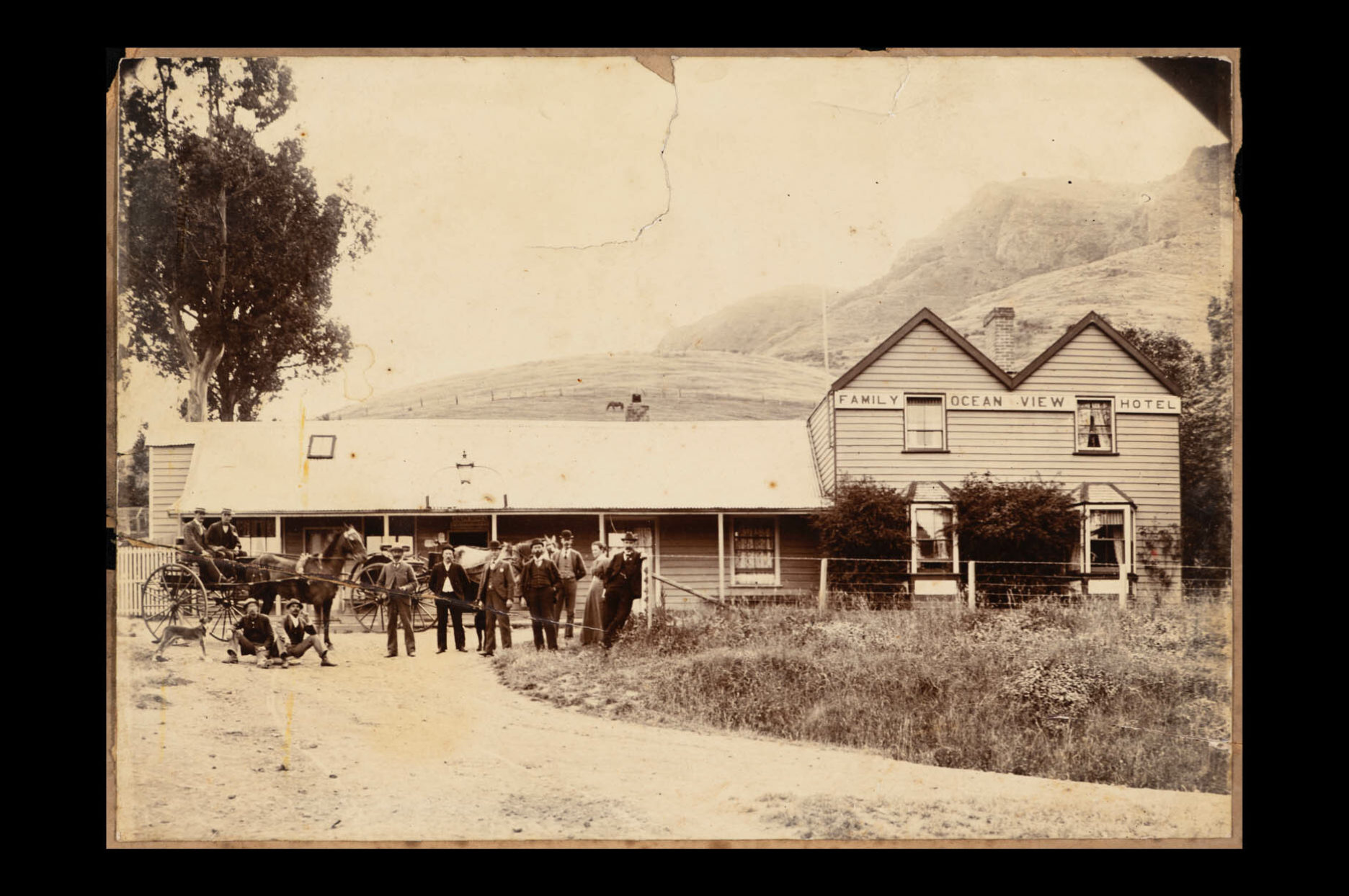
Men and horses outside the Family Ocean View Hotel. Date: 1900-1950. Photographer: F.B. Hughes. Te Ūaka The Lyttelton Museum ref. 7955.1
Man is gregarious and people love to mix and mingle-nothing like having horses to get one to the pub to have a yarn with your mates! This hotel became the Governors Bay Hotel a few years later.
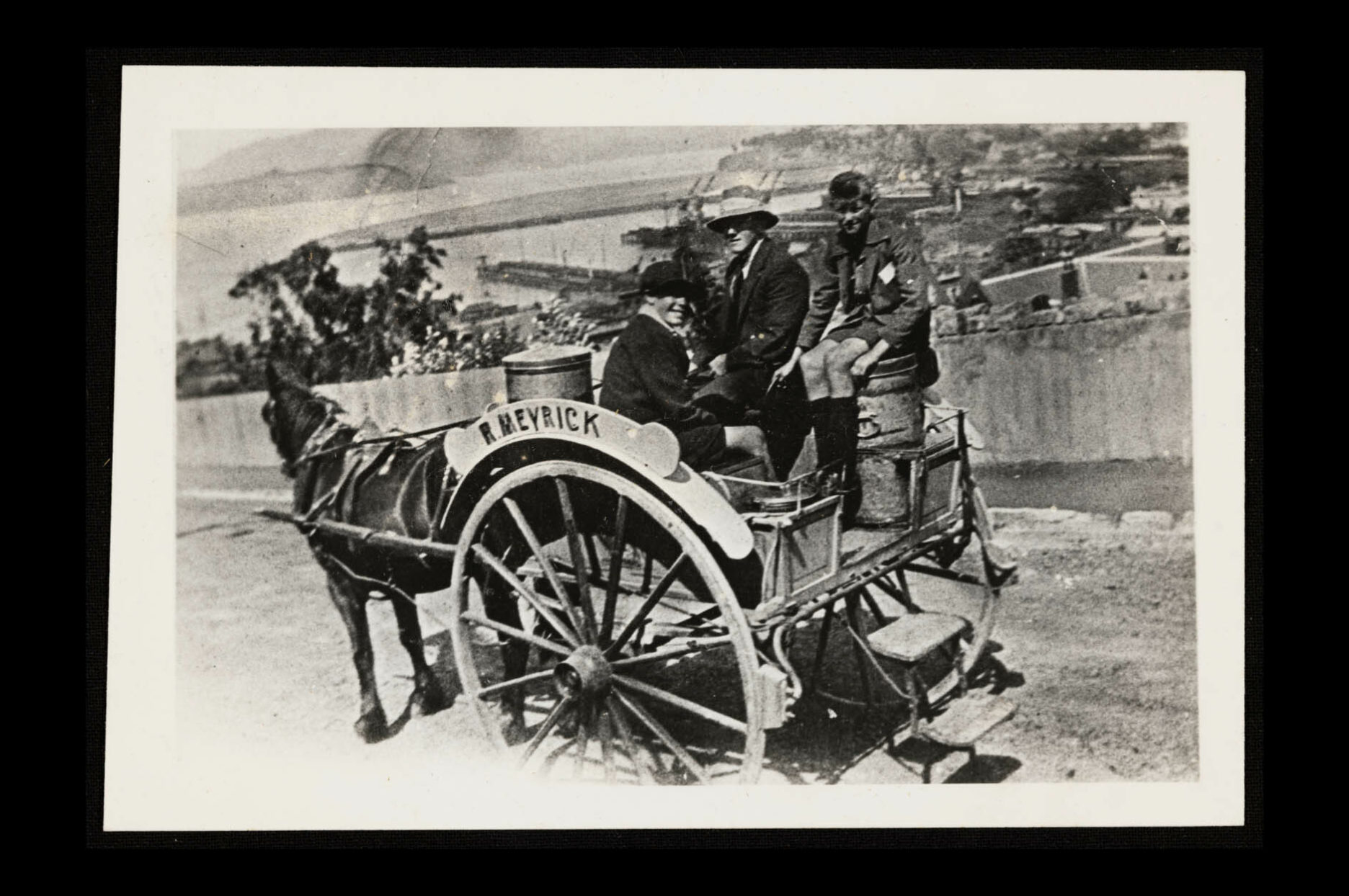
Reproduction of an older photo. Douglas Percy Birch and Doug Mannix with a third unidentified man on horse drawn cart labelled 'R. Meyrick'. Date: 1900-1950. Photographer unknown. Te Ūaka The Lyttelton Museum ref. 14862.1
A lovely Lyttelton scene of the horse and dray- The Meyricks had Brenchley Farm around the early 1900s. Note the different style of clothing being worn by the three occupants.
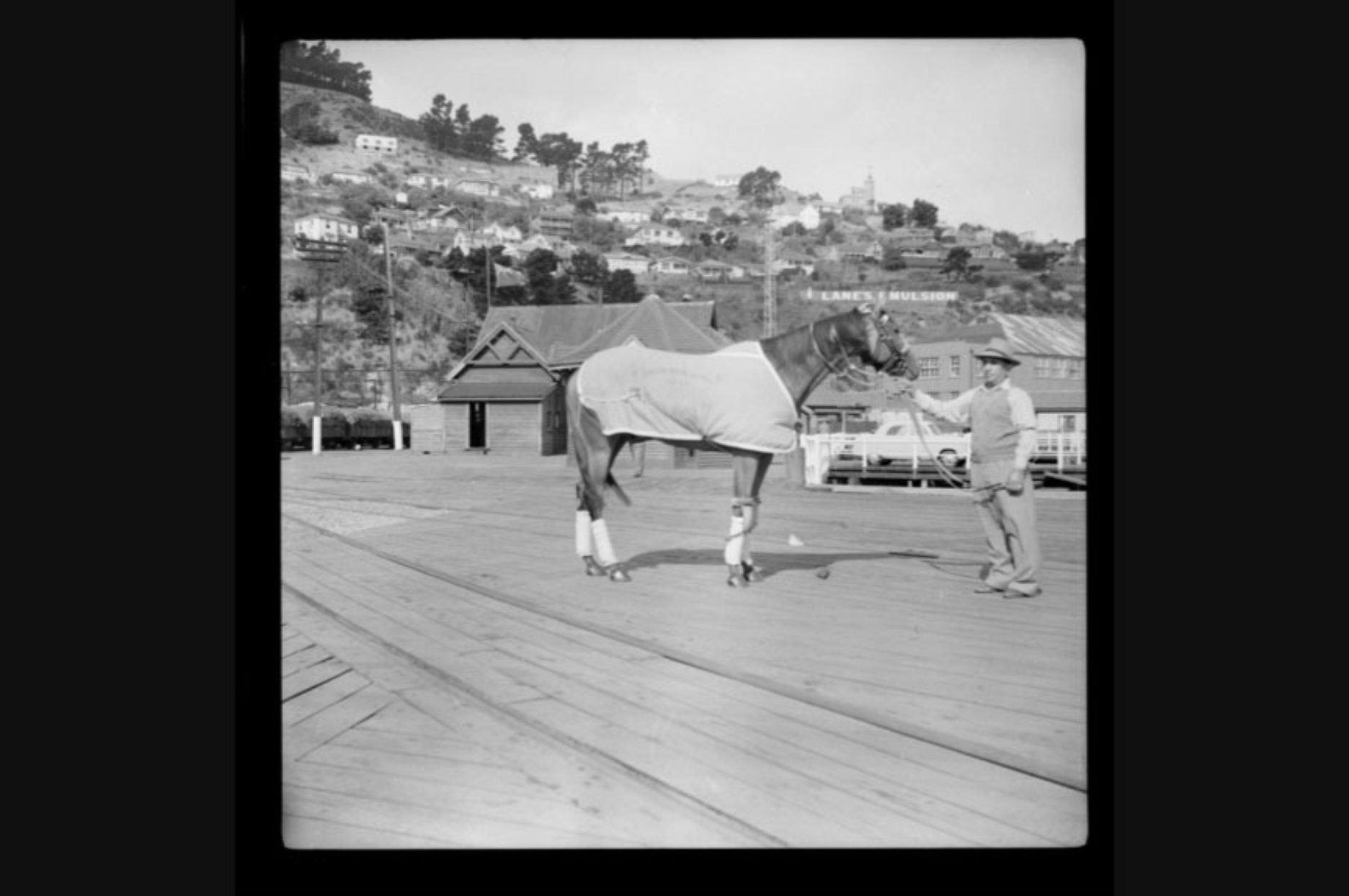
An unidentified man with a horse, Gold Scheme, at Lyttelton Port. Date: 1950-2000. Photographer unknown. Te Ūaka The Lyttelton Museum ref. 12911.1
This looks like a thoroughbred-possibly arrived from the North Island for a meeting at the Canterbury Jockey Club-wearing a summer coat so maybe here for the NZ Cup!! And complete with his dapper strapper! Anyone know if this is the Gold Scheme that won the New Zealand St Leger, on his way there or back from Trentham (Wellington) in 1953?
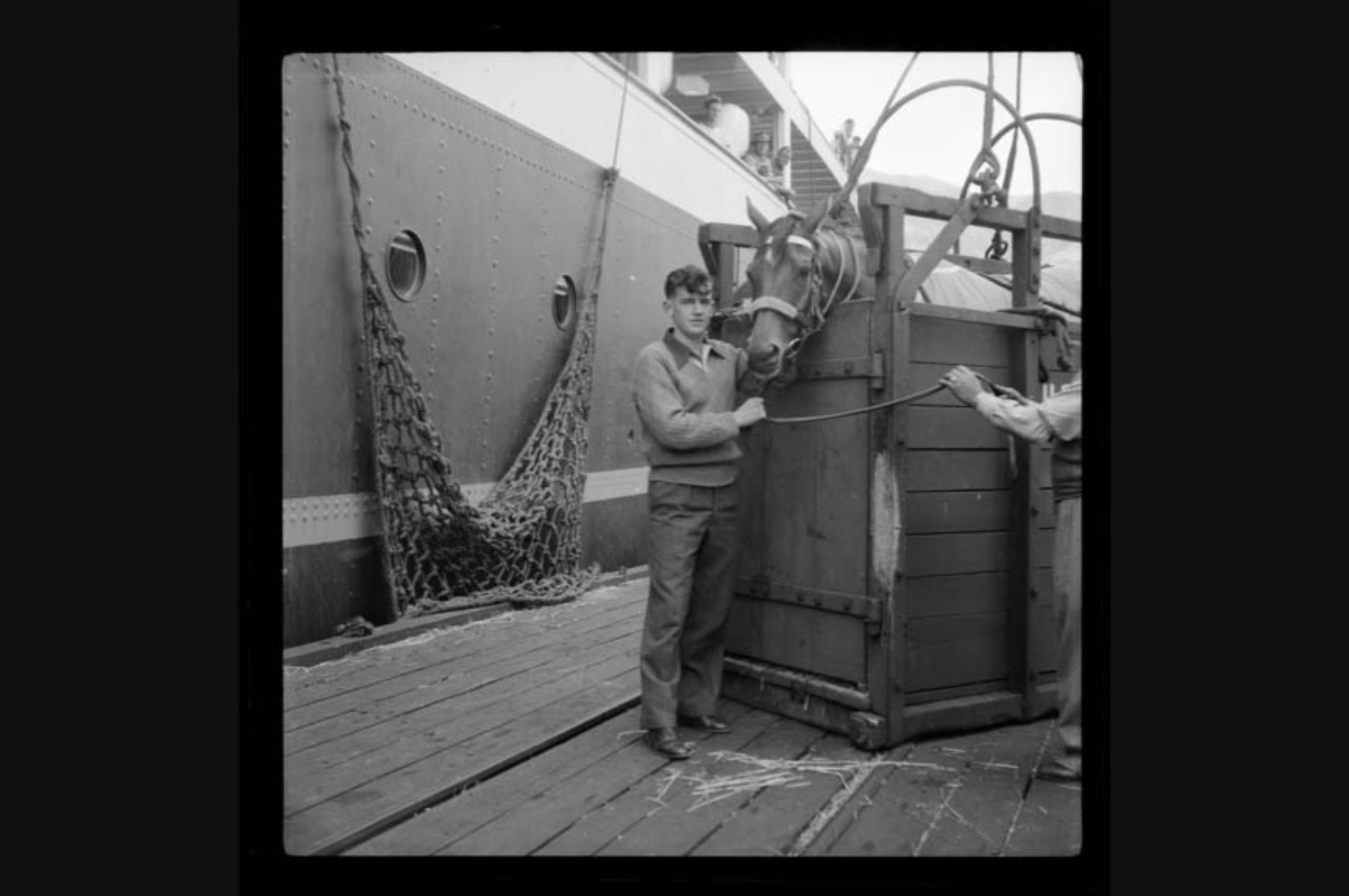
An unidentified man with a horse, Gold Scheme, in transport crate at Lyttelton Port. Date: 1950-2000. Photographer unknown. Te Ūaka The Lyttelton Museum ref. 12912.1
These days many horses are flown to Australia and even the North Island-the transport crate looks most uncomfortable for the horse surely? I hope that welfare for horses has made huge improvements.
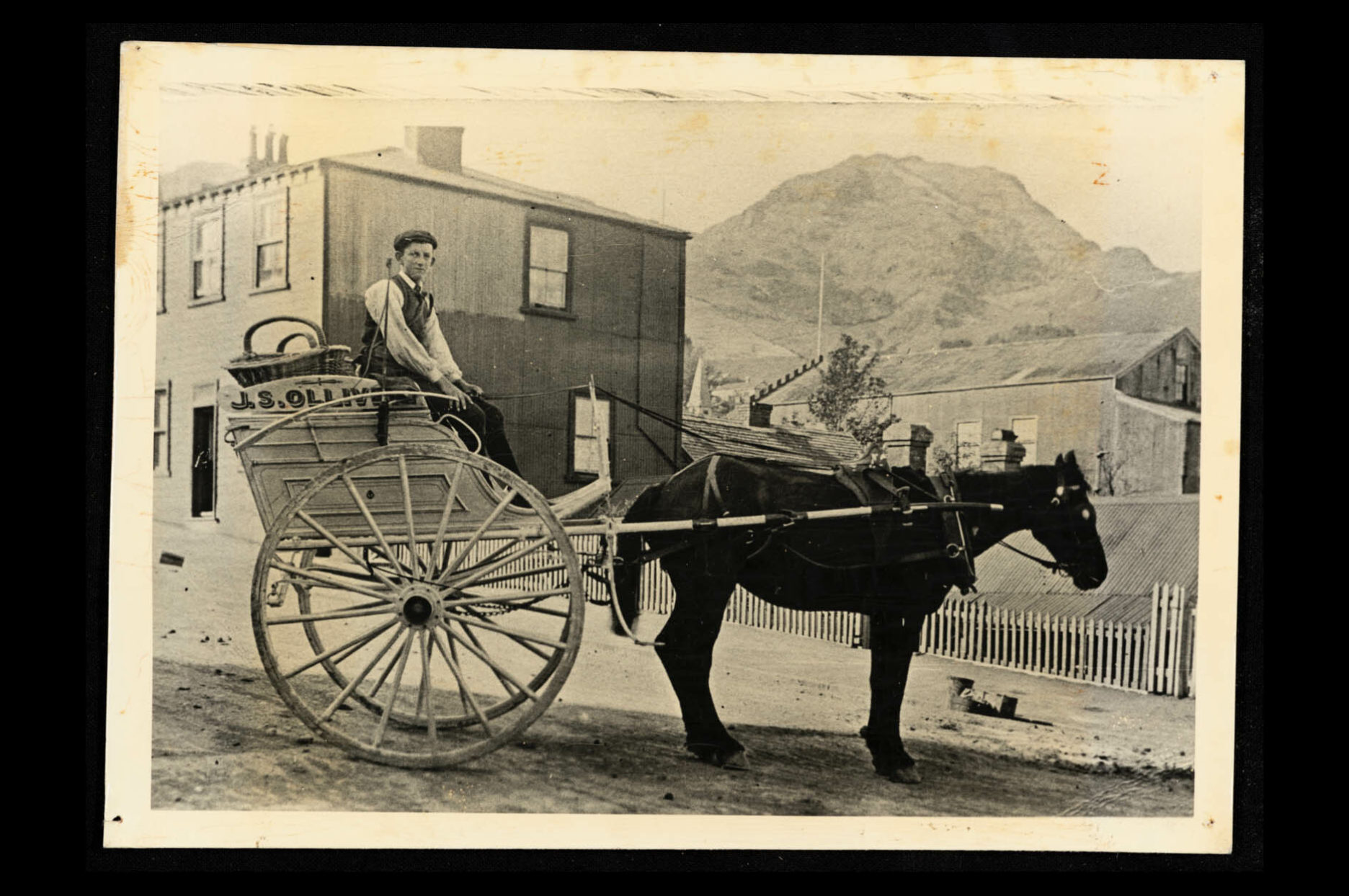
Tom Norris as a young man in 1914. Butcher delivery cart and horse. Photographer unknown. Te Ūaka The Lyttelton Museum ref. 11675.1
Uber and grocery delivery services have come a long way since 1914! But Customer Service remains paramount!
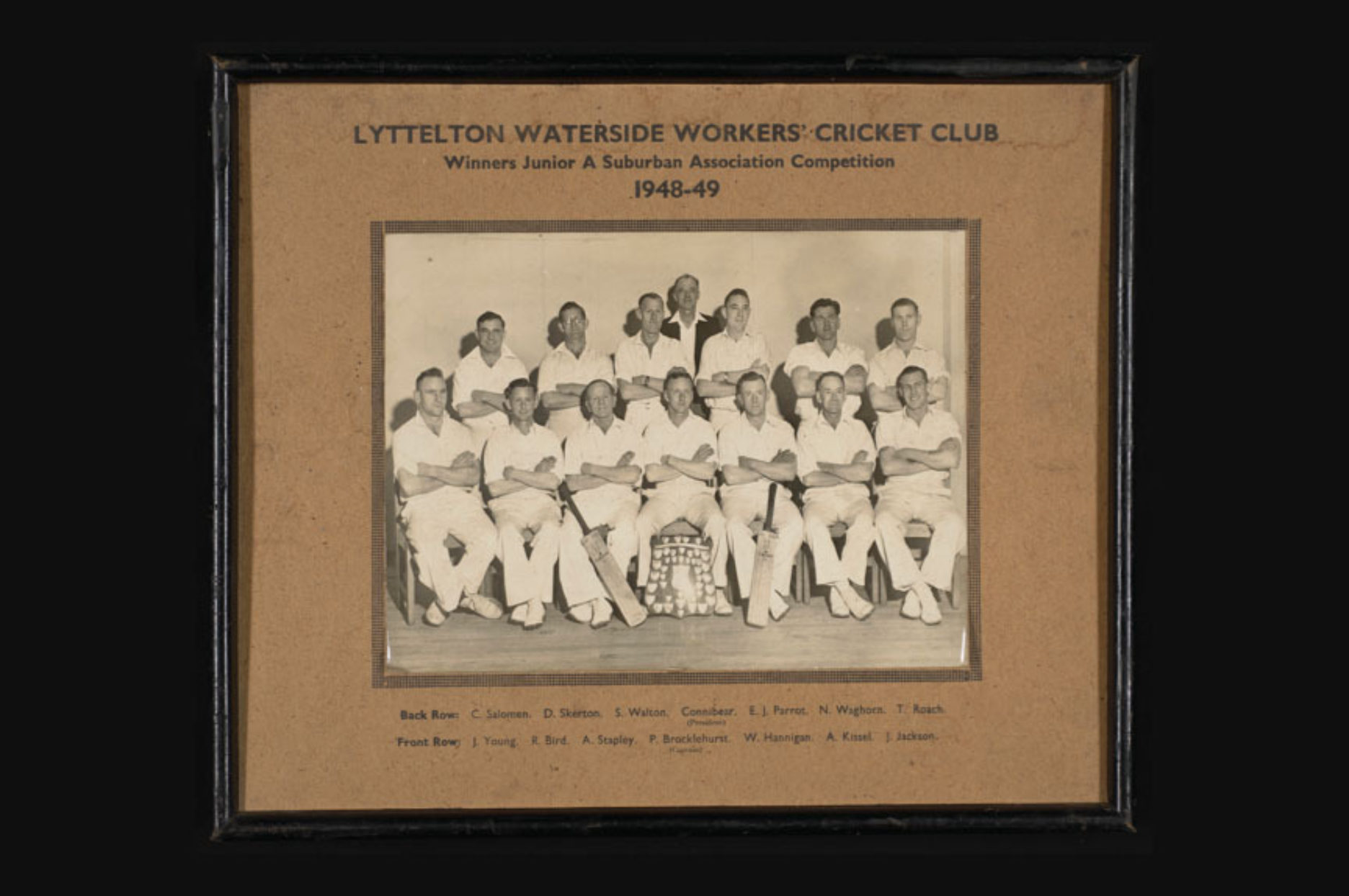
The Lyttelton Waterside Workers Cricket Club, winners of the Junior A Suburban Association Competition, 1948-49. Unglazed, wooden frame. Date: 1949. Photographer unknown. Te Ūaka The Lyttelton Museum ref. 14231.1
My husband Mike Dormer and a committee of enthusiasts began The Willows cricket club in 1993 at Loburn-(North Canterbury) encouraging High school first 11s to play against experienced cricketers in a rural setting. Cricket was clearly a popular activity here in Lyttelton via the Waterside Workers Cricket Club-and a successful group it seems-1948-1949 a significant forerunner period to what was to come in 1951 in Lyttelton.
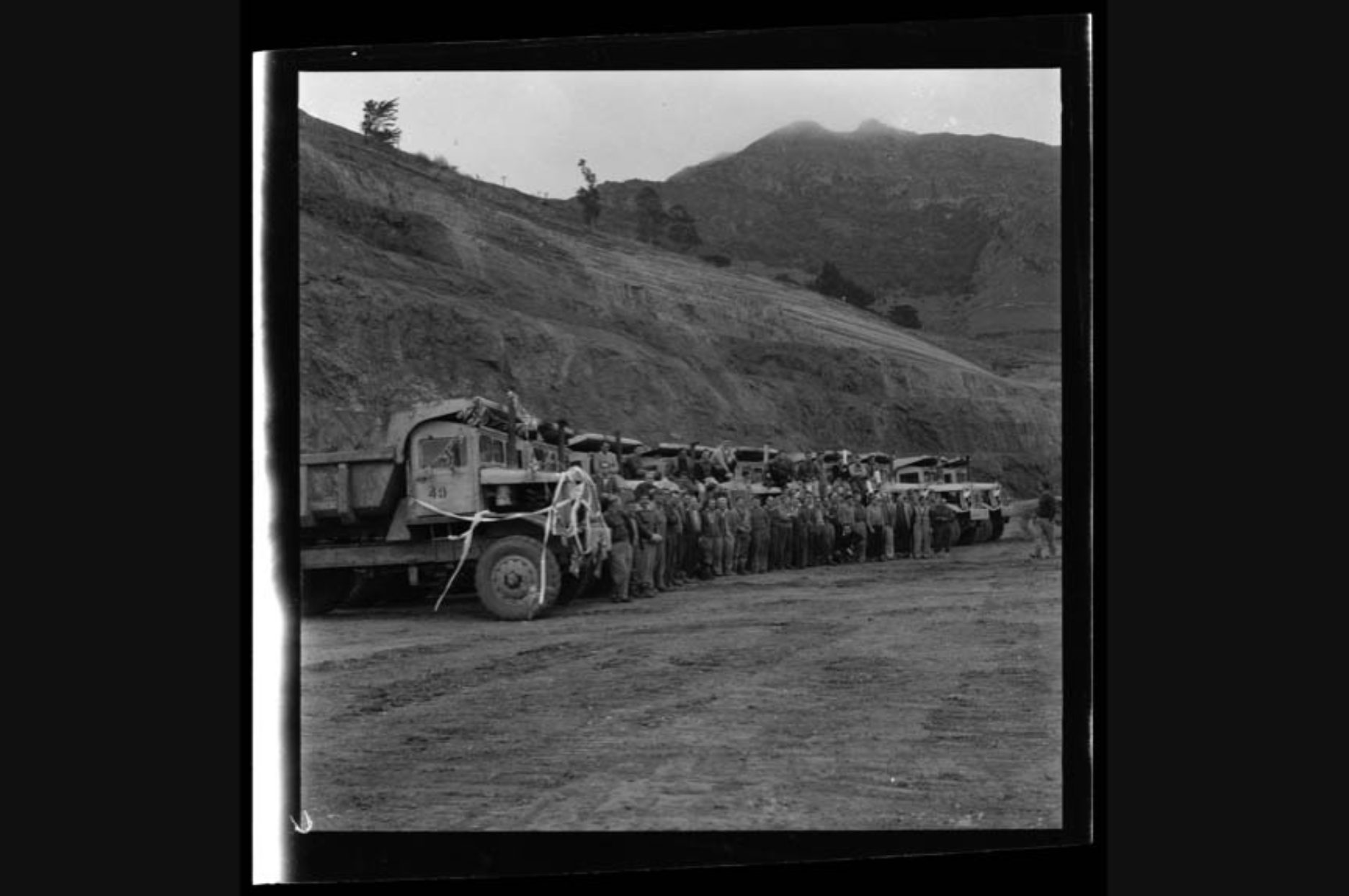
Earthmoving trucks and drivers at quarry at Gollans Bay. Date: 1950-2000. Photographer unknown. Te Ūaka The Lyttelton Museum ref. 12814.1
My elder son Peter started Dormer Construction aged 18 - around 1995 - diggers, trucks, civil and drainage. Subsequently my other son Ben and his business partner have taken on a quarry business, hence my interest in this slide of activities at Gollans Bay-trucks and quarries and drainage.
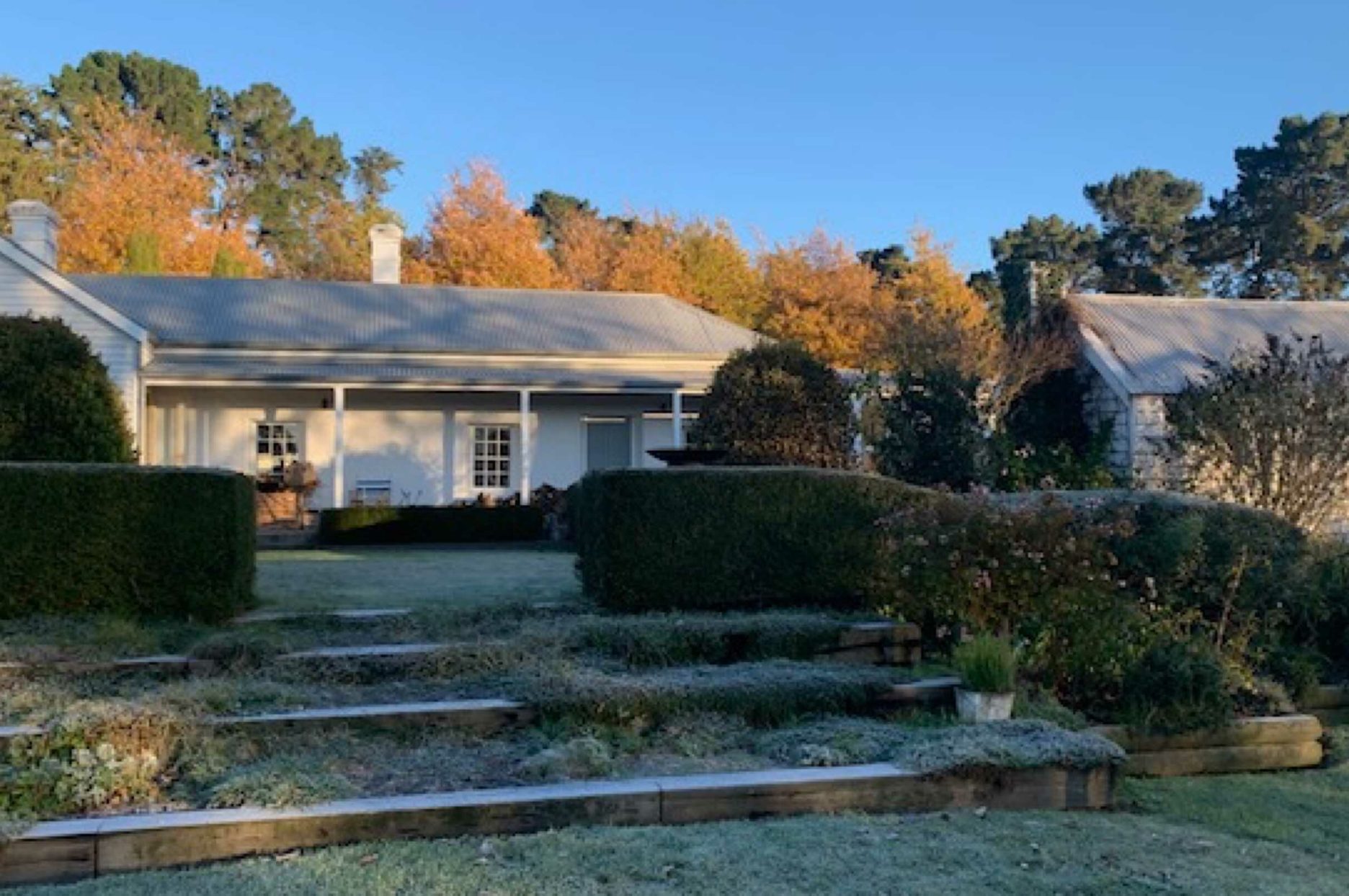
This property was given to Captain O’Connor in 1886. He had been brought from Ireland to supervise the building of the port infrastructure, however when the Provincial Government decided not to go ahead with building the wharves in Lyttelton, they gifted him the land as some compensation. Captain O’Connor subsequently built the cob cottage himself using local clay and this property remained in the O’Connor family until 1951.It was purchased by the Dormer family in 1993 and at a later date Winsome was excited to reconnect Lyttelton and Loburn again and discover more of the historical connections.